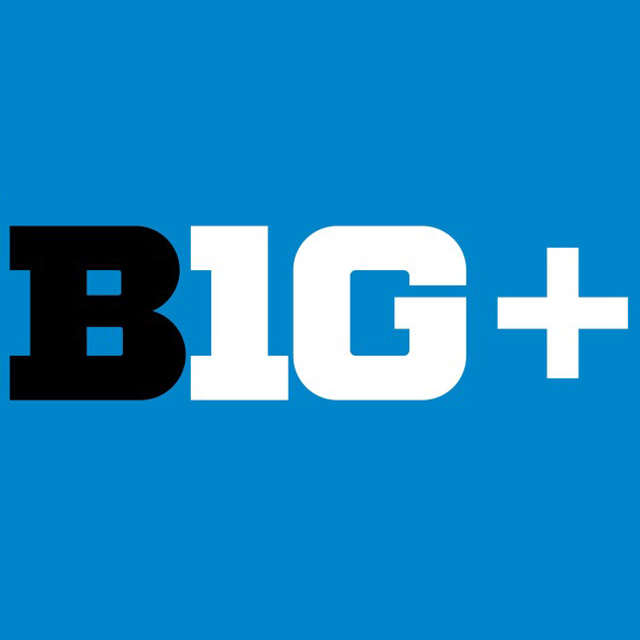Tom Dienhart, BTN.com Senior Writer, May 7, 2014
NEW YORK — Jim Delany is a man on the move. Catch him if you can.
The Big Ten commissioner is tugging a big black bag behind him as he walks toward a waiting Amtrak train that?s headed from New York?s Penn Station to Union Station in Washington, D.C.
Train 2109 departs at 8 a.m. And Delany is ahead of schedule. He has a big announcement to make. There is no time to be tired. Only time to think about what?s next.
The Big Ten is changing before our eyes. Oh, we all knew this was coming. We have known about the additions of Rutgers and Maryland for almost two years. But now, the reality is hitting the Big Ten between its Midwestern eyes.
On Monday, Delany announced a basketball event with the Big East. On Tuesday, he?s off to trumpet the arrival of the Big Ten basketball tourney to Washington, D.C., in 2017. This has been a journey for Delany that may forever change the face of college athletics as he unveils plans of the Big Ten?s invasion of the East.
?It is important to show that we are here,? said Delany, who earlier hatched a deal to begin sending a Big Ten team to the Pinstripe Bowl at Yankee Stadium beginning this season. ?To be there, you have to live there. And this is a step in that direction.?
A big step.
Delany?s train pulls away from the station, the last leg of a 14-day junket that has included stops in places like Las Vegas, Dallas, North Carolina, New York and now Maryland. The end is near. But, it?s just a beginning for the Big Ten as it begins to unfurl new aspects of a bold Eastern expansion that has the nation watching and wondering.
It?s a bold endeavor for Delany. But, he?s a bold guy. Heck, in some respects, it?s a career-defining plunge for Delany, who has been on the job since 1989. But this isn?t about Delany. That?s not his style. He?s merely a servant. This is about the Big Ten?s future, it?s about strengthening the league?s position as a premier conference. It?s about a better tomorrow.
***
This all began with a thunderous splash back in the fall of 2012, when the Big Ten announced it was going to add Rutgers and Maryland beginning in 2014 to push membership to 14 teams. It sent shockwaves throughout athletic departments. And, it was a move Delany and the Big Ten felt they had to make in the wake of other "land grabs" by rival conferences.
Don?t blame Delany for the conference chaos that broke out a few years ago. Nope. He wasn?t looking to expand after the league added Nebraska in 2011. He thought the Big Ten could avoid expansion by forging a scheduling partnership with the Pac-12.

But that fell apart. And then the conference merry-go-round started to spin-quickly.
In the summer of 2010, Colorado and Utah said they were joining the Pac-10 to make it the Pac-12.
In the fall of 2011, Syracuse and Pitt announced they were leaving the Big East for the ACC. And Notre Dame said it was coming along in all sports but football in September 2012.
Texas A&M and Missouri officially joined the SEC in July 2012.
And on it went, as rumors and wild speculation became the norm. It was crazy. It was scary, too.
There sat the Big Ten, quiet amid the chaos. Finally, Delany had to act. The tipping point: The ACC's move into the Big Ten?s geographic region.
?At that point, there was more risk to not do anything,? said Delany. ?It was worth the risk to change. To not change with other leagues coming into our areas ? "
Enter Rutgers and Maryland.
***
The Big Ten now stretches from Lincoln, Neb., to Piscataway, N.J., in this new world of college athletics that has expanded boundaries that at one time seemed implausible. Any previously held notions about what makes up a conference were trashed. Quaint regionalism was out. Mega-market goliaths were in.
?I think I know why Jim did it,? said former Big East commissioner Mike Tranghese. ?When he saw the Big East falling apart, there was this important piece of geography in the Northeast. And he probably didn't think he could leave it alone. If the Big East had been viable and people had been willing to make it work, I think things would have remained the same. The Big Ten had nothing to do with the breakup of the Big East.?
Some rightly question the modest athletic credentials of Rutgers and Maryland. And, it?s a fair point. But Delany sees each as a fit, often referencing the ?DNA? similarities between Rutgers and Maryland. Each is a flagship state university renowned for research prowess and overall academic heft.
?The commonalities between these schools and the others in the Big Ten are numerous,? says Delany. ?The academic people at Rutgers and Maryland are thrilled about this. They will fit in well among their Big Ten colleagues.?
***
This new world Big Ten order came into focus the last two days. There were two stop-rubbing-your-eyes-this-is-really-happening moments.
On Monday, Delany announced in the world's most famous arena–Madison Square Garden–that the Big Ten-Big East would collaborate on the Dave Gavitt Tipoff, which will kick off the regular season with a series of eight games between four schools from each conference over four days. It is slated to run through 2022.
?This is a chance to expand our base, stay connected with our already existing fans and offer games we think everyone will like,? said Delany. ?We have to enhance and increase our presence in this area.?
On Tuesday, Delany declared the news that the Big Ten will bring its basketball tourney to Washington, D.C., and the nearby Verizon Center in 2017. The event has bounced between Chicago and Indianapolis since its inception in 1998, so this move East will be a radical departure. But, more importantly, it will be another bold move into the Eastern Seaboard.

?We have to show we live in this area,? said Delany. ?We need boots on the ground. Events like this will help and show our commitment.?
This is happening, people, ready or not. It's an exciting time for the Big Ten, as it embarks on this new era. Rutgers and Maryland won?t officially join the conference until July 1. But these recent events in New York and Washington, D.C., are sneak peeks of what's ahead and how this historic conference is changing.
?Clearly this will make the Big Ten more TV money,? said Tranghese. ?This has to raise their economic profile with a presence in New York and Washington. Maryland already has a significant profile in Washington. It's not the same with Rutgers. It's in New Jersey. They have not had a lot of success. There is a long road to hoe before they can make an imprint in New York. New York is different than Jersey. Rutgers has good support in New Jersey, but it's not New York. And no one captures New York unless you win. It's simple. You lose, they forget about you. You win, they embrace you.?
***
The Big Ten first made a move Eastward over 20 years ago when it added Penn State, which officially came aboard in 1993. Some thought that addition was an odd marriage between Midwestern monolith and Eastern power.
?The moves we are making now by adding Rutgers and Maryland would be more difficult without Penn State,? said Delany.
Next, the league pushed West with the addition of Nebraska in 2011. This seemed perfect, as the Cornhuskers possessed many of the same Midwestern traits as the Big Ten family they were marrying in to. Nebraska looked and felt like a Big Ten school. This was an easy fit, especially when you factor in the rich athletic history and bottomless pit of passionate fans.
But those moves weren't as radical as what's happening with the arrivals of Rutgers and Maryland. The Big Ten's bold step to the East has been widely praised as marketing/TV genius and widely panned as fool's gold because of the schools' modest athletic credentials.
?I think the Midwest is different,? said Tranghese. ?They are sophisticated and supportive of their teams. They will have to buy into Ohio State playing Rutgers or Michigan playing Maryland. The only way they'll buy in is if Rutgers and Maryland can play. Rivalries are created by playing quality, meaningful games.?
By adding those schools, the Big Ten is pushing into new, heavily populated markets in New York City, Baltimore and Washington. Add that to existing Big Ten markets like Detroit, Pittsburgh, Cleveland, Chicago, Cincinnati, Indianapolis, Milwaukee and Minneapolis, and you can see the heft the Big Ten will bring to the TV negotiating table.
Big TV markets mean eyeballs, eyeballs mean money, and money means power and security.
***
While the newbies have demographics-to-die for, will they be able to compete? Most agree Maryland may be more ready-made for success than Rutgers. Still, being part of the Big Ten, being able to sell the Big Ten to recruits and being part of the Big Ten?s ample revenue stream figures to bolster the future prospects of both schools. In short, by being in the Big Ten, by rubbing shoulders with and competing against the likes of Penn State, Ohio State, Michigan and Nebraska, the fortunes of Rutgers and Maryland figure to improve on the field.
With iconic Big Ten brands coming through Piscataway and College Park, games will become bigger events–more so at Rutgers than Maryland, which had plenty of big-time foes matriculate through campus while in the ACC. Still, both schools will benefit from playing some of college sports biggest and best programs the likes of which neither the ACC nor the American Athletic (or Big East) could match.
Without a doubt, the bank accounts of each will improve–significantly. To wit: According to most published reports, when Maryland joins the Big Ten for the 2014 season, it will immediately make $32 million in revenue, $12 million more than the ACC?s $20 million payout to its schools. The Big Ten?s payout to Maryland will increase to $33 million in 2015, $34.5 million in 2016, and then it will jump to $43 million in 2017 after the Big Ten renews their TV contract. Then the payout will increase to $44 million in 2018 and $45 million in 2019.
***
The move East isn't all about cable households, ratings points, common DNA and bottom lines. There are some potential negatives. The Big Ten's footprint now stretches from Lincoln, Neb., to Piscataway, N.J. That's 1,287 miles or a 19-hour and 16-minute drive. From Lincoln, Neb., to College Park, Md., is 1,202 miles, or an 18-hour drive. No doubt, travel costs for league schools will rise.
Critics also point to the loss of regionalism that makes conferences great and builds rivalries. Rivalries will remain a big part of football, thanks to division drawn up based on geography. But other sports will be division-less. Will Minnesota fans really care when, say, Rutgers comes to Minneapolis for a hoops game?
?All these schools have moved and are making a lot more money,? said Tranghese. ?A lot. For instance, the money Rutgers will get will allow it to operate its athletic department. They were struggling to do that. When BC went to the ACC, it got a significant amount of money more. I think the same will hold true for Syracuse and Pitt. But will the fans buy into it??
And what about that Big Ten hoop tourney on the East flank of Big Ten territory in D.C.? The event has bounced between Chicago and Indianapolis since it began in 1998. Both cities are ideal hosts for many reasons, the not least of which is their proximity to Big Ten schools. Most are within driving distance. But with the event moving to Washington, D.C., in 2017, fans of most schools will be challenged by the distance. How many Nebraska, Minnesota, Illinois, Wisconsin, Michigan or Michigan State fans, for instance, will make the trek East? Perhaps a large Big Ten alumni base in the Beltway area will help fill the seats.
That?s a worry for another day. Right now, the possibilities seem endless for the Big Ten, whose move East was out of necessity and as much as survival in this bold new college athletics world.
| About Tom Dienhart | BTN.com senior writer Tom Dienhart is a veteran sports journalist who covers Big Ten football and men's basketball for BTN.com and BTN TV. Find him on Twitter and Facebook, read all of his work at btn.com/tomdienhart, and subscribe to his posts via RSS. Also, send questions to his weekly mailbag using the form below and read all of his previous answers in his reader mailbag section. |
And if you want to leave a comment on this post, use the box below. All comments need to be approved by a moderator.







 Basketball is back! Find available live games on our B1G+ app via BigTenPlus.com.
Basketball is back! Find available live games on our B1G+ app via BigTenPlus.com. 